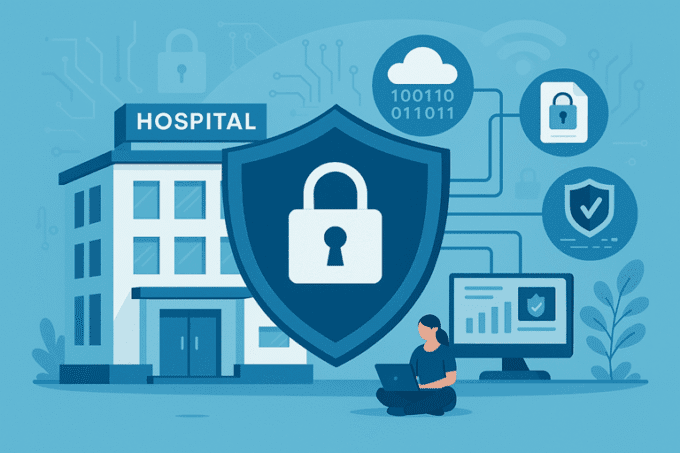In the ever-evolving battle against cyber threats, Google has taken a decisive step forward with its recent security crackdown on malicious apps in the Google Play Store. This initiative marks a significant milestone in safeguarding users from harmful software and reinforces Google’s commitment to maintaining a secure digital ecosystem. By leveraging advanced technologies like machine learning, AI-driven detection, and stricter developer policies, Google has achieved a notable victory in reducing the prevalence of malicious apps—a win for both users and the broader tech community.
The Growing Threat of Malicious Apps
Malicious apps have long been a persistent threat to mobile users, often disguised as legitimate applications to deceive unsuspecting victims. These apps can perform a range of harmful activities, including:
- Data theft: Stealing sensitive information such as login credentials, financial data, or personal details.
- Ad fraud: Generating unauthorized ad revenue by simulating clicks or impressions.
- Spyware: Monitoring user activity, capturing keystrokes, or recording audio/video without consent.
- Ransomware: Encrypting files and demanding payment for their release.
According to cybersecurity reports, millions of Android devices have been affected by malicious apps over the years, costing users and businesses billions in damages. For more insights into app-based threats, visit Google’s Android Security Reports.
Google’s Multi-Layered Approach to Security
To combat this growing menace, Google has implemented a comprehensive, multi-layered strategy aimed at identifying and eliminating malicious apps before they reach users. Here’s how Google achieved this victory:
1. Enhanced App Review Process
Google has tightened its app review process by employing a combination of automated tools and human reviewers. Before an app is published on the Play Store, it undergoes rigorous scrutiny to detect signs of malicious behavior.
- AI and Machine Learning: Advanced algorithms analyze app code, permissions, and metadata to identify suspicious patterns indicative of malware.
- Behavioral Analysis: Apps are tested in sandbox environments to observe their behavior during runtime, ensuring they don’t engage in harmful activities post-installation.
2. Play Protect Integration
Google’s Play Protect service, which is built into Android devices, plays a crucial role in scanning apps for potential threats—even those downloaded outside the Play Store. With over 100 billion apps scanned annually, Play Protect has successfully flagged and removed thousands of malicious apps, providing an additional layer of defense for users.
3. Stricter Developer Policies
Google has introduced stricter guidelines for developers to ensure compliance with security standards. Key measures include:
- Requiring detailed explanations for app permissions.
- Banning apps that misuse accessibility features or engage in deceptive practices.
- Enforcing accountability through mandatory developer identity verification.
Developers found violating these policies face penalties ranging from app removal to permanent bans from the Play Store.
4. Collaboration with Cybersecurity Experts
Google actively collaborates with external researchers, ethical hackers, and organizations like the App Defense Alliance to identify emerging threats. Bug bounty programs incentivize security professionals to report vulnerabilities, further strengthening the platform’s defenses.
For more on Google’s collaborative efforts, explore Google Project Zero.
Results of the Crackdown: A Victory Worth Celebrating
The results of Google’s security crackdown speak for themselves:
- 99% Reduction in Potentially Harmful Apps: According to Google’s annual transparency report, the number of potentially harmful apps installed via the Play Store has decreased by 99% since 2017.
- Over 1.5 Million Apps Removed: In 2024 alone, Google removed over 1.5 million apps from the Play Store due to policy violations or malicious intent.
- Improved User Trust: Users now feel more confident downloading apps, knowing that Google’s stringent measures minimize risks.
These achievements underscore Google’s leadership in creating a safer mobile environment while setting a benchmark for other app marketplaces to follow.
Real-World Impact: Stories of Success
Several high-profile cases highlight the effectiveness of Google’s crackdown:
1. Takedown of Joker Malware
The infamous Joker malware, known for subscribing users to premium services without their knowledge, was responsible for infecting millions of devices worldwide. Through proactive detection and rapid response, Google identified and removed over 1,700 Joker-infected apps in 2023, preventing widespread harm.
2. Elimination of Spyware Networks
Google worked alongside international law enforcement agencies to dismantle spyware networks targeting journalists and activists. By blocking these malicious apps and notifying affected users, Google protected vulnerable communities from surveillance and exploitation.
For case studies and examples, refer to Google’s BadApps Blog.
Challenges Remain Despite Progress
While Google’s efforts represent a major victory, challenges persist:
- Third-Party App Stores: Many malicious apps still circulate on unregulated third-party platforms, bypassing Google’s safeguards.
- Evolving Tactics: Cybercriminals continually adapt their methods, using sophisticated techniques like obfuscation and repackaging to evade detection.
- Global Reach: Ensuring consistent protection across diverse regions with varying levels of regulatory oversight remains a challenge.
Addressing these issues will require ongoing innovation, global cooperation, and user education about safe downloading habits.
Tips for Users: Staying Safe in the Digital Age
While Google’s crackdown has significantly reduced risks, users must remain vigilant. Here are some tips to stay protected:
- Download Only from Trusted Sources: Stick to the official Google Play Store and avoid sideloading apps from unknown websites.
- Enable Play Protect: Ensure Play Protect is active on your device for real-time scanning.
- Review Permissions Carefully: Be cautious of apps requesting excessive or unnecessary permissions.
- Keep Software Updated: Regularly update your operating system and apps to patch known vulnerabilities.
- Report Suspicious Apps: If you encounter a suspicious app, report it to Google immediately for investigation.
Learn more about staying safe online at Android Security Hub.
A Step Toward a Safer Future
Google’s security crackdown represents a monumental leap forward in the fight against malicious apps. By combining cutting-edge technology, strict policies, and collaborative efforts, Google has not only protected millions of users but also raised the bar for app store security globally.
However, the battle is far from over. As cybercriminals continue to innovate, so too must defenders. Google’s proactive approach serves as a reminder that cybersecurity is a shared responsibility—one that requires constant vigilance, adaptation, and collaboration.
As users, we can celebrate this victory while remaining mindful of our role in maintaining a secure digital ecosystem. Together, with leaders like Google paving the way, we move closer to a future where malicious apps are no longer a threat. For updates on Google’s security initiatives, visit Google Security Blog.
Stay informed, stay secure, and let’s keep the momentum going!

















Leave a comment